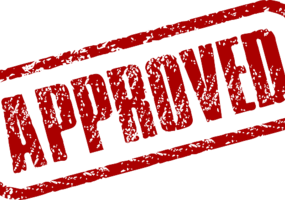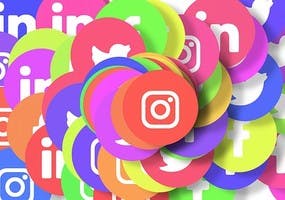What is Data-Driven Influencer Marketing?
Data-driven influencer marketing is the talk of the town lately, and it’s something every company will invest in sooner or later. It also happens to be what Beatly focuses on since it’s the only way a brand can create optimized and high performing marketing campaigns. Also, data-driven influencer marketing makes sure your ROI is completely transparent. But before we get into the details, you need to understand what data-driven influencer marketing is, and more importantly how it differentiates from “regular” influencer marketing.
So without further ado, let’s dive right into it.
An Introduction to Data-Driven Influencer Marketing
Obviously, data-driven influencer marketing revolves around data that can be collected from activated campaigns. The purpose of collecting the data is to measure how well influencers are performing on their own, but also to understand how the campaign is doing in its entirety. The information is later used to calculate your ROI and to optimize future campaigns.
You are essentially trying to figure out how much bang you’re getting from your buck and how you could get even more bang by tweaking your strategy. But there is a lot of data that could be measured, so you need to know what is the most important to focus on.
In order to best describe the data you need to focus on, we will divide a campaign following the AIDA-model and focus on three different funnels with the associated data.
Note that a marketing funnel can be divided into multiple funnels depending on how detailed you need it to be. In order to keep this guide as accessible as possible, we’ve split it into just three stages: top, mid, and low funnel.
Data-Driven Influencer Marketing In the Top-Funnel
When following the AIDA-model or looking at your campaign through a marketing funnel, the top-funnel is the first stage. This is where you will grab a potential client’s attention and inform them about a product or service that is being offered. The right influencer should not have a problem reaching your desired target group, and at this point in the campaign, engagement should be really high.
One of the easiest ways to evaluate how your campaign is doing at this stage is by looking at how users are interacting with a post. Is the post getting a lot of likes, comments, and shares? Also, are the comments positive or negative? Are users showing an interest by asking questions? The more engagement you have here, the more people you will reach, which will increase the likelihood of you performing well in the following funnels.
The three main metrics that we look at here are:
- Cost per Impression - You want the number of impressions to be as high as possible but the cost per impression to be as low as possible.
- Cost per Engagement (CPE) - This number should be as low as possible, i.e. you want to engage as many potential clients as possible for the least amount of money.
- Engagement Rate - This metric should be as high as possible as the purpose of a data-driven influencer marketing campaign is to create engagement.
Data-Driven Influencer Marketing in the Mid-Funnel
Hopefully, the initial stage of the campaign was successful and your influencers engaged a lot of potential customers. As mentioned, the more customers engaged in the first stage, the better you will perform in this next one.
The mid-funnel in a marketing strategy goes under many names such as awareness, consideration, evaluation, etc. This is where you will get a customer from seeing the post on an influencer's profile to actually clicking a link or introducing themselves to a product by visiting your e-commerce page. The goal at this stage is to convince the customer to continue to the last funnel and actually make a purchase.
In this funnel we look closely at the following two metrics:
- Cost per Click (CPC) - You want every click that you get to be as cheap as possible.
- Click Through Rate (CTR)- You also want as many clicks as possible in order to show your product to as many people as possible.
In most cases, the higher the CTR is the lower the CPC falls. These two metrics are sort of connected and dependent on each other.
Data-Driven Influencer Marketing in the Low-Funnel
The low-funnel is the last step of the campaign and this is where you get customers to buy the product or service you’re selling. This step is extremely important, although, it’s not necessarily the most important stage since it is also relying on the first two stages to work.
Another important thing to remember here is that you need to have a good landing page to direct customers too, otherwise the likelihood of a final purchase drops. A good landing pages needs to be well-designed, easy to use, and you should offer something special. In most cases we recommend that you run specific sales and deals for your campaigns.
And don't forget to track the influencers' users with unique URLs. By giving one unique URL to each influencer you will be able to track how much everyone contributed and the amount of traffic they attracted. Beatly.com always provides traceable URLs for every campaign.
If you hired the right influencer, you should have created a high engagement and a high CTR and hopefully, you’ve managed to convince the potential customers that they need what you’re selling. It is at this point that you will get results from the campaign, whether you’re trying to sell a product or acquire more followers on your social media.
Note that Beatly always evaluates all of this information from start and use the data to optimize your campaign while it's running. We also use information from all past campaigns to optimize the results for every new campaign that we activate.
At this stage we look at several important factors and indicators but generally speaking the most important are:
- Conversion - Do you have a high conversion rate? Great, that means the campaign worked! Do you have a low conversion rate? That’s not so good and it’s time to get back to the drawing board.
- Cost per Acquisition/Action - How much did each action or paying customer cost? The lower the better.
- Return on Investment (ROI) - How valuable was the campaign based on your investment? Was the data-driven influencer marketing campaign worth it in the end?
The Most Important Metrics for Data-Driven Influencer Marketing
In order to summarize it all, we want to recap the metrics that you should collect and evaluate.
- Cost per Impression
- Cost per Engagement
- Engagement Rate
- Cost per Click
- Click Through Rate
- Conversion Rate
- Cost per Acquisition
- Return on Investment
We consider these eight metrics to be the most important and the ones that we suggest everyone focus on, but there is more to it than that, and you can make an endless list of data for your data-driven influencer marketing.
The only question that remains to be answered is: how do you collect all this information? Well, you either do it on your own or you let us help you with our programmatic system with a network of influencers that all have great previous results.
Beatly’s Data-Driven System
Beatly is leading the industry when it comes to effective data-driven influencer marketing and we take pride in our work. Our aim is to help you and your brand reach out to your intended target group and for you to achieve the results you’re looking for. Additionally, our goal is also to optimize campaigns for you and others in the future.
To be able to do this, we have developed a system that automatically collects all the data we've mentioned above and more. The data is then processed in our programmatic system and is applied to other campaigns and it affects everything from choosing the right influencer to how the campaign should be set up.
We are constantly running highly successful and completely data-driven influencer marketing campaigns in several markets around the world. Our automatic system allows us to streamline each campaign a little more. This means that results keep improving for all of our loyal customers.
Micro Vs. Macro Influencers for Data-Driven Campaigns
As a little bonus tip regarding data-driven influencer marketing, we wanted to talk about how different kinds of influences can affect your results and data.
There have been many studies where people try to figure out whether big influencers are better than smaller ones, and all of them come up with the same result.
Today, there is no longer any doubt that micro influencers with less than 50,000 followers provide the best results, especially when you look at the data. In fact, when looking at the metrics we’ve mentioned above, micro influencers surpassed macro influencers in every stage.
Micro influencers provide better results with everything from Cost per Impression and Click Through Rates to Cost per Acquisition, and more importantly Return on Investment.
The only exception is that large influencers, in some cases, can have a higher engagement rate since they can reach more people. But it doesn’t really matter unless the influencer can match the engagement rate with the rest of the data.
Our conclusion is that the use of micro-influencers is of utmost importance for anyone looking to maximize their data-driven influencer marketing. Do you want great results? Then you need to use smaller influencers.
A Quick Summary of Data-Driven Influencer Marketing
Data-driven influencer marketing is all about evaluating each part of every campaign in an attempt to figure out the efficiency of each influencer and your strategy so that you can optimize future campaigns.
It’s a tedious task to handle all the required data, and it definitely requires a great understanding of how influencer marketing works. The truth is that most brands struggle and fail with their data-driven influencer marketing due to the overwhelming amount of work that’s required.
That’s why we suggest you let us handle it for you instead. Our automatic data system and a highly experienced team of marketers will ensure that each of your campaigns run at the highest possible level and that your results continue to improve over the years.
Do you want to get started with data-driven influencer marketing that is proven to work? Send us an email to sales@beatly.com and we’ll get started right away.









